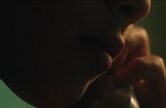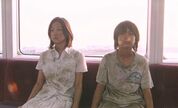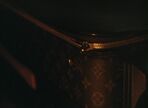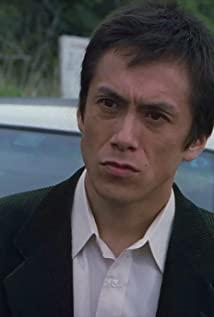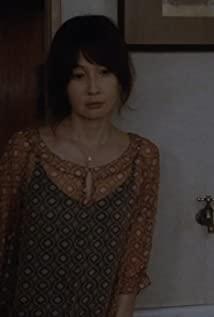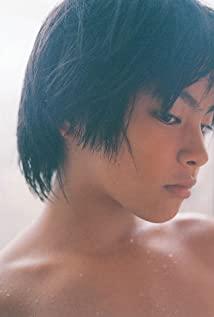This is a typical looking up shot. In the lens language, it generally symbolizes the tallness of the character's status. It is more commonly used in American superhero movies to highlight and demonstrate the greatness of the protagonist.
But at the end of "Nobody Knows", when used on a 12-year-old child, it does show such sadness: it implies that the protagonist Akira Fukushima has grown up, and after these accidents, he has to grow up - next In one scene, Fukushima Akira's younger brother (Shiger) pulled his shirt to remind him that it was time to cross the road. Fukushima took his eyes off the plane and returned to reality: he has to take responsibility and pay There are brothers and sisters to support - life goes on.
This is just the last scene of the 2 hour 21 minute movie!
The reason why I chose the title "Living in the Sun" is precisely because of the arrangement of the director's shots: the protagonist (Aki Fukushima) rarely stands in the sun, and most of his shots are dark and cold. tone.
Even near the end of the film, in the brief, sunny segment, Fukushima and his younger siblings end up walking out of the sun into the "shadows" of the house -- implying that in reality, the outcome is not rosy.
Let's continue from the beginning of the movie:
(This movie is based on real events, which will be introduced at the end of this article.)
Part 1 Fukushima Akira's Few "Sunshine"
The film begins with a "dark" tone: the main color is a cool dark green, which is the main reality of the protagonist - dark and brutal. (We will know later, this is on the way to bury the dead sister)
But we focus on Fukushima Akira's few "standing in the sun"
*The first sunshine of Fukushima Akira
In an unknown apartment in Tokyo, a mother and son moved in. Facing the new environment and relying on his mother and younger siblings, Akira Fukushima was novel and happy. The main color was warm. The "new life" should be full of hope.
But then, Fukushima Akira went to pick up his sister Kyoko home, and the tone changed to "cold tone" again
*Second place where the whole family gathers for dinner
This lens is classic
(1) It was Hirokazu Koreeda who placed the family dining table in the center of the camera, and the mother at the very center. The eyes of the whole family were focused on the mother, and the light was "just" above the mother's head - the mother was like a "Virgin", the whole family people's reliance.
(2) Warm colors and cool colors form a strong contrast, and the outer vignetting adds together to show this contrast - the coexistence of warmth and cruelty, and it is more urgent to highlight the value of warmth. But it can't hide the grim reality that surrounds them.
Here we are, take note of the shot treatment of the mother:
It implies that the status of the mother is still higher than that of the children.
Looking at the treatment of the child's lens
It can be seen that Akira Fukushima's status is higher than that of other younger siblings. At this time, the mother still has a higher status among the children.
The first dinner together explained the story: the four children had no household registration, so they had to hide in boxes and be "transported" into their new home. The mother often stayed home at night, and most of the time the younger siblings needed the care of the elder brother, Akira Fukushima.
Then we went out to buy groceries for the first time from Akira Fukushima to see how Director Hirokazu Koreeda handled their family's social status.
【The social status of the new family】
"The social status of the new family" is reflected by the "location of the new home", follow the protagonist to walk out of the house to the society, observe the "location of the new home"
The last picture points out the entire social structure. Director Hirokazu Kore-eda arranged this ladder. Below the ladder is the family of the protagonist (Aki Fukushima), and above the ladder is the real society.
Every time the protagonist buys food and goes home, he walks down the stairs from the "sunshine" society and returns to the "no one knows" corner at the bottom of the society.
[They live at the bottom of society as "no household registration"]!
The second day ended with a curry meal, a symbol of family ties in Hirokazu Kore-eda's film.
This is more reflected in "The Diary of the Sea Street" directed by Hirokazu Koreeda.
Along with the meal comes a change in the status of the mother.
Since then, the mother and Fukushima Akira's shots have been at the same level until the end of the mother's departure. It is implied that mothers who do not take care of their children begin to disintegrate in the eyes of their children.
With her mother coming home for the last time, her shot has completely changed to a "top shot"
At this time, the mother's position completely disintegrated.
At this time, it was explained that the fathers of the four "unregistered" children were different. Akira Fukushima's father worked at Haneda Airport, Kyoko's father was a music producer, Shigeru's father was also in Haneda, and Koyuki's father did not explain. We will discuss later. It is understood that the mother does not know who Xiaoxue's father is.
The appearance of the second part "Father"
According to Freud's psychoanalytic theory, the lack of a father's role will lead to a son's femininity. , is reflected in another way of concealment.
(1) "Hope" and "Ideal" symbolized by "Father"
According to his mother, Akira Fukushima's father worked at the airport, and the plane, in the movie, became a symbol of the father's role. For example, Akira Fukushima often looks at the planes flying in the sky.
Going to Haneda to see the plane is actually an allusion to "going to Haneda to see my father". Looking at the planes flying in the sky actually means looking at the unreachable "father" and the "ideal" separated from the cruel reality.
(2) Two "fathers"
With the "food shortage crisis" that came with the departure of his mother, Akira Fukushima could only go to the "two fathers" of his sister Xiaoxue for help.
The first "father" was a taxi driver
He was dumb, calm, not angry, but he couldn't give him the slightest warmth, and he didn't even give Akira Fukushima a penny when he heard that their mother had not returned for a month. This implies that the father who left Fukushima Akira did not give him any warmth and was far away from "Haneda".
Akira Fukushima had to go to Xiaoxue's "other father" for help
The other father is still irresponsible and eager to separate the relationship, only the action of touching Fukushima Akira, and 2,000 yen, gave Fukushima Akira "father-like" and "hypocritical" warmth.
(3) Baseball
Then, Akira Fukushima finally felt "father"
The "no one knows" coach, let the curious Fukushima Akira play, stand in the sun and play baseball like an ordinary child, and hold his hand tightly, give him "strength", give him "guidance", He even gave him a "father's hug". This is probably Akira Fukushima's happiest day.
(At this time, Fukushima Akira stood in the sun, and the film tone became "warm tone")
(4) Akira Fukushima assumed the role of "father" and took care of his younger siblings.
The third part of Fukushima's light and dark feelings
With the arrival of Saki, Akira Fukushima gradually has a love for her.
It is the film directed by Hirokazu Kore-eda, which is full of warmth, with subtle feelings, and expresses feelings through hints.
For example, the following hint
Blue has hinted at the heroine long before.
For example, when the heroine (Saki) first arrived at the man's house, she picked up the blue crayon head, placed it with the four crayon heads on the table, and declared "join".
And after that, the younger sister Xiaoxue painted the heroine (Saki), using the "blue crayon head", and then the "five crayon heads" appeared in the lens.
This just hints at the silent love of the male protagonist for the female protagonist.
The fourth part is the seed that was thrown away.
And their four children picked up the four fallen seeds, planted them in their homes, and wrote their names. This further implies that they are the "discarded seed".
Part 5 Koyuki's Death "Nobody Knows"
Before his sister Xiaoxue accidentally fell to his death, Akira Fukushima was happily playing baseball outside. This joy and sorrow formed a huge gap, which can even satirize the "absurdity" of reality.
And Xiaoxue's death has long been hinted.
for example
(1) Brother Mao, a flower that has fallen out accidentally, and this flower happens to be the flower with their name written on it.
(2) When sister Xiaoxue was standing on the chair, there was a skeleton toy next to her looking at her feet.
(3) When Akira Fukushima was playing baseball, the audience's weird song "Super Home Run, Let Heaven"
Then, the next day, touching the cold body of his younger sister Xiaoxue, Akira Fukushima ran out and sang this weird song again:
(4) When Akira Fukushima ran home, the cat jumped from the windowsill out of fear.
Afterwards, the male protagonist, the female protagonist and the younger siblings held a simple ceremony for Xiaoxue, and then Xiaoxue was put into the "suitcase" when she arrived, and was moved to a place "unknown" by "no one knew", and then again Buried outside Haneda Airport by "no one knows".
Part VI Burial
Akira Fukushima and Saki took their sister Koyuki to Haneda Airport, fulfilling the wish he promised, taking Koyuki to see the plane, and then burying Koyuki.
The two were forced to grow up
The cruel life has not stopped yet, but they are forced to grow up and continue to live.
It is a film directed by Hirokazu Koreeda, which is infinitely close to life and reality. When you hear thunder in a silent place, you need to observe carefully to get close to his original intention. But in this cruel movie, it is director Hirokazu Koreeda who made a joke to the audience. The reality is far away. More brutal than the movie!
【Xi Suga Duck Abandoned Baby Incident】
View more about Nobody Knows reviews




